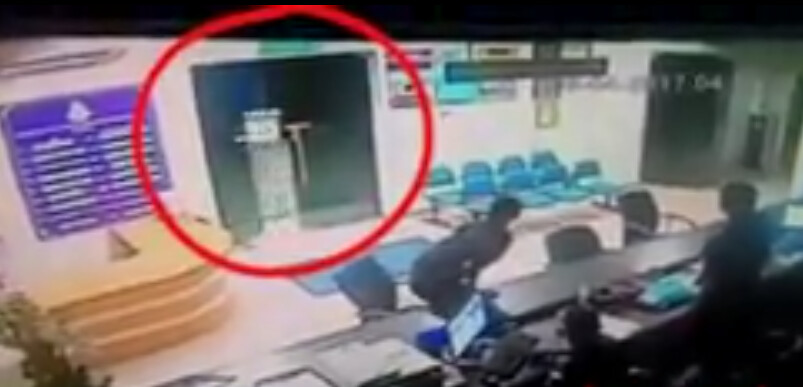This is one of my favorite Sutra known as the Heart Sutra. It has a very soothing and a calming effect to me just listening to it. I never get enough of it. The lady singing this song has such an amazing voice and she sang the Sutra very well.
The Heart of Perfect Wisdom Sutra or Heart Sutra or Essence of Wisdom Sutra (Sanskrit: प्रज्ञापारमिताहृदय Prajñāpāramitā Hṛdaya) is a well-known MahāyānaBuddhist sutra that is very popular among Mahayana Buddhists both for its brevity and depth of meaning.
The Heart Sutra is made up of 14 shlokas in Sanskrit; a shloka composed of 32 syllables. In Chinese, it is 262 Chinese characters, while in English it is composed of sixteen sentences.
The Heart Sutra has generally been thought to have probably been composed in the first century CE in Kushan Empire territory, by a Sarvastivadin or ex-Sarvastivadin monk. The earliest record of a copy of the sutra is a 200-250CE Chinese version attributed to the Yuezhi monk Zhi Qian. It was supposedly translated again by Kumarajiva around 400CE, although John McRae and Jan Nattier have argued that this translation was created by someone else, much later, based on Kumarajiva's Large Sutra. Zhi Qian's version, if it ever existed, was lost before the time of Xuanzang, who produced his own version in 649CE, which closely matches the one attributed to Kumarajiva. Xuanzang's version is the first record of the title "Heart Sutra" (心經 xīnjīng) being used for the text, and Fukui Fumimasa has argued that xinjing actually means dharani scripture. According to Huili's biography, Xuanzang learned the sutra from an inhabitant of Sichuan, and subsequently chanted it during times of danger in his journey to the West.
Lyrics
Namah sarvajnaaya
-Adoration to the Omniscient!
Aaryaavalokiteshvara-bodhisattvo gambhiiraayaam prajnaapaaramitaayaam caryaam caramaano vyavalokayati sma: panca skandhaah; taamshca svabhaava-shuunyaan pashyati sma.
-When Holy Avalokiteshvara Bodhisattva performed the deep practice in the Perfection of Transcendent Wisdom, he contemplated that there were five aggregates but observed that they were devoid of essential nature.
Iha Shaariputra ruupam shuunyataa shuunyataiva ruupam, ruupaan na prithak shuunyataa, shuunyataayaa na prithag ruupam, yad ruupam saa shuunyataa, yaa shuunyataa tad ruupam.
-In this case, Shaariputra, form is voidness and voidness is itself form; voidness is not different from form, and form is not different from voidness; that which is form is voidness, and that which is voidness is form.
Evem eva vedanaa-samjnaa-samskaara-vijnaanaani.
-So it is for perception, conception, volition and consciousness.
Iha Shaariputra sarva-dharmaah shuunyataa-lakshanaa, anutpannaa, aniruddhaa, amalaa, na vimalaa, nonaa, na paripuurnaah.
-In this case, Shaariputra, all things have the characteristics of voidness; they neither arise nor perish; they are neither defiled nor pure, neither deficient nor complete.
Tasmaac Chaariputra shuunyaayaam na ruupam na vedanaa na samjnaa na samskaaraa na vijnaanaani.
-Therefore, Shaariputra, within the voidness, there is no form, no perception, no conception, no volition, nor consciousness.
Na cakshuh-shrotra-ghraana-jihvaa-kaaya-man
-Neither is there eye, ear, nose, tongue, body or mind.
Na ruupa-shabda-gandha-rasa-sprashtavya-dha
-Neither is there form, sound, smell, taste, touch nor concepts.
Na cakshurdhaatur yaavan na mano-vijnaana-dhaatuh.
-Neither is there realm of sight, etc., until we come to the non-existence of realm of consciousness.
Na vidyaa, naavidyaa, na vidyaa-kshayo, naavidyaa-kshayo, yaavan na jaraa-maranam na jaraamarana-kshayo, na duhkha-samudaya-nirodha-maargaa, na jnaanam, na praaptir apraaptitvena.
-Neither is there wisdom, nor ignorance, nor extinction of wisdom, nor extinction of ignorance, etc., until we come to the non-existence of old age and death and the non-extinction of old age and death. Neither is there suffering, cause of suffering, extinction of suffering, nor the path leading to extinction of suffering. Neither is there wisdom nor acquisition because there is no grasping.
Bodhisattvasya prajnaapaaramitaam aashritya viharaty acittaavaranah. Cittaavarana-naastitvaad atrasto, viparyaasaatikraanto nishtha-nirvaanah.
-Depending on the bodhisattva's Perfection of Transcendent Wisdom, one dwells without any mental hindrance. Because of the absence of mental hindrance, one is fearless; freed from delusory thoughts, one will reach Nirvana.
Tryadhva-vyavasthitaah sarvabuddhaah prajnaapaaramitaam aashrityaanuttaraam samyaksambodhim abhisambuddhaah.
-All Buddhas dwelling in the three periods realize the highest, perfect enlightenment depending on the Perfection of Transcendent Wisdom.
Tasmaaj jnaatavyo prajnaapaaramitaa-mahaamantro mahaavidyaa-mantro 'nuttara-mantro 'samasama-mantrah, sarvadukha-prashamanah, satyam amithyatvaat, prajnaapaaramitaayaam ukto mantrah.
-For this reason, know that the Great Mantra of the Perfection of Transcendent Wisdom is the Great Wisdom Mantra, the Unsurpassed Mantra, and the Unequaled Mantra. It extinguishes all suffering, and is true and real because it is not false. It is the Mantra proclaimed in the Perfection of Transcendent Wisdom.
Tad yathaa gate gate paaragate paarasamgate bodhi svaaha.
-Namely, "Gone, gone, gone to the other shore;
Gone completely to the other shore.
Svaha."
Iti prajnaapaaramitaa-hridayam samaaptam.
-Thus ends the Essence of the Transcendent Wisdom Sutra.
CONTRIBUTION (with Thanks)
1. Imee Ooi
2.ZenLiem
3. Free Feng Shui Blog



